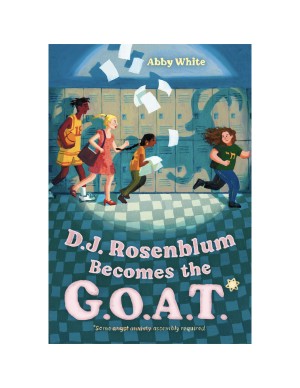Sam J. Miller uses the first person and descriptive writing to pull the reader into the life of teenaged Matt, an angst-filled nail-biter denying himself food — while also hungry for love and a friend. Matt is on the trail of a crime he is trying to solve. Starving himself heightens his sense of smell, hearing, and danger. The reader wonders if this tactic will really help Matt solve the crime and his other problems, but neither Matt nor the reader are even sure what the crime really is.
Each chapter is similarly structured, starting with rules about not eating, and the number of calories Matt has consumed that day. Sometimes it is about 1,000 — about half of a normal diet, and quite harmful. That small fact creates a sense of danger for the reader. There are also days of zero calories. One slowly surmises that Matt is a neglected teen with a missing father and sister, though his kitchen is full of food. By the book’s midpoint, Matt is slowly killing himself in exchange for hoped-for superpowers. Each crisis is a cliffhanger: Will Matt figure things out? Will he get better? Will he find friendship? Will he ever feel comfortable with himself?
The novel doesn’t shy away from controversy and problems. It is full of teens cursing, smoking, running away, and exploring their sexuality and sexual orientations. There is also homophobia and bullying. In terms of Jewish content, Matt is Jewish but not observant. The text presents vexing juxtapositions: the complex characters’ connection to their religion is light, as they relish eating bacon and pork lo mein. Matt’s missing father is a Jewish Buddhist who works on a lobster boat, and his mother works in a slaughterhouse that kills pigs. She goes to synagogue to get drunk. Matt’s friend Tariq is a wealthy Arab whose family “sell[s] Christmas trees to infidels.” Matt and his family do not seem to have any real connection to a Jewish community.
The stronger issue is Matt’s fitting in, with his Jewishness acting as a nod to his outsider status. The novel explores the issue of kids disappointing their parents, parents disappointing their kids, and the dynamics of sibling relationships. Matt’s mother is described as a terrifying force of nature who’s also fragile. The reader helplessly follows Matt’s journey, wondering if he could solve his problems by talking about them. Is his absent father the issue, or does his absence allow Matt to break out of “the masculinity prison”? His voice is mature at times, but he is also alone as he describes his control issues. Readers will stay with the tale, as questions remain until the very end.
Recommended for ages 14 to 18.
Dina Weinstein is a Richmond, Virginia-based writer.





